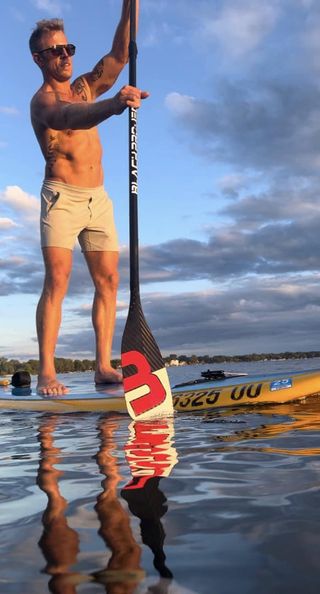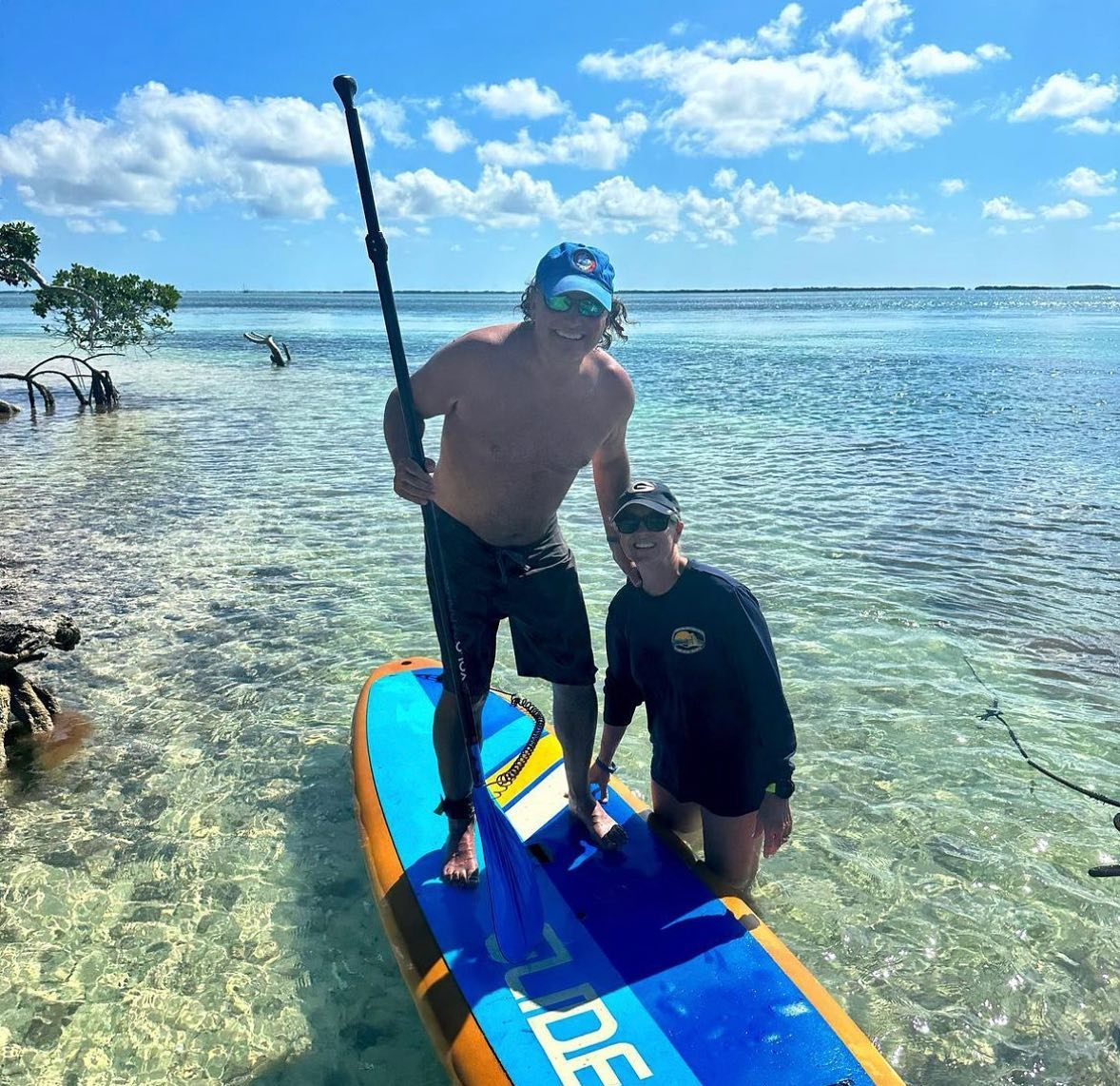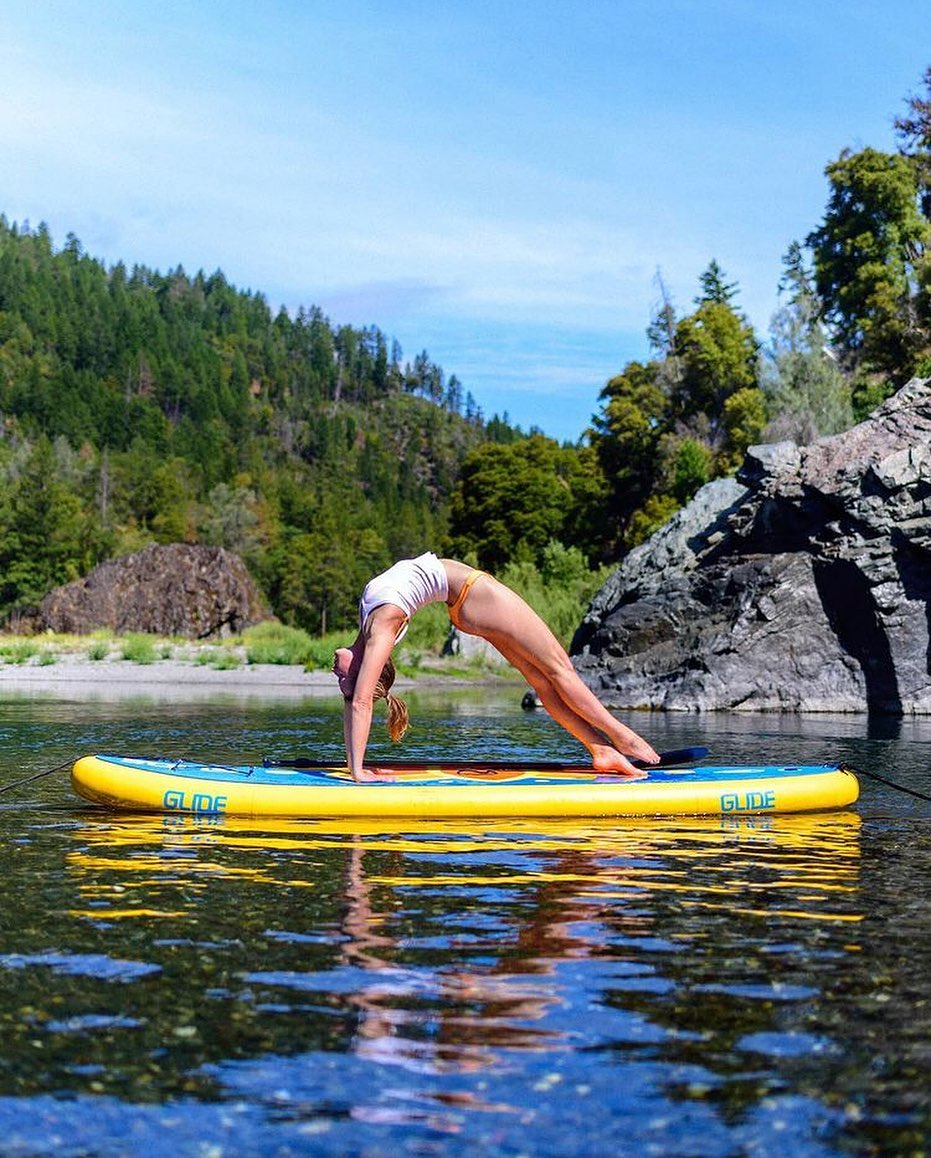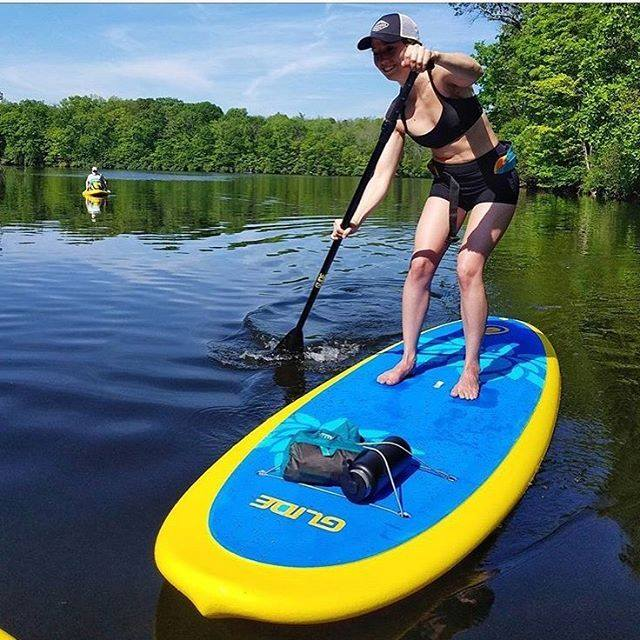
Paddle Boarding for Weight Loss: Your SUP Fitness Plan
Burn fat with SUP using clean technique, Zone 2 cruises, tempo, intervals, and smart recovery. Get a weekly plan, gear picks, and safety tips for sustainable, paddle-powered results.
SUP is a sustainable way to reduce body fat because it blends full-body muscle engagement, low-impact cardio, and sessions you’ll actually stick with.
Expect broad calorie ranges (roughly 300–800+ kcal/hour depending on size and intensity).
Technique upgrades—clean catch, torso-driven power, early exits—raise pace without beating up your joints.
Use a mix of Zone 2 cruises, tempo, intervals, chop skill days, and SUP yoga/mobility to build capacity and maintain motivation.
Choose a stable board you can paddle for an hour, a light carbon paddle for cadence, and wear the right safety gear.
Pair your paddling with protein-centered meals, good sleep, and small weekly progressions for steady, visible results.
Table of contents
Stand up paddle boarding (SUP) is one of the few workouts that checks every box: full-body muscle engagement, joint-friendly impact, heart-pumping cardio, and the kind of scenery that makes you actually want to train. If your goal is trimming body fat (belly included), SUP gives you a sustainable path: technique that scales, sessions that feel like play, and progression that fits beginners through advanced paddlers. Read on for tips on paddle boarding for weight loss.
This guide explains why SUP works for fat loss, how many calories you can realistically burn, which workouts accelerate results, and the gear/safety basics that keep progress steady. You’ll finish with a practical weekly plan you can maintain—on flatwater, small surf, or something in between.

Why SUP is a fat-loss powerhouse
Total-body recruitment. Every stroke demands balance from your feet and legs, bracing from your core, and power from your back, shoulders, and arms. More muscle groups working = higher oxygen demand and energy burn.
Low impact, high adherence. SUP is gentle on knees/hips and comes with built-in variety (routes, conditions, skills). Enjoyment drives consistency—arguably the most important fat-loss variable.
Steady state + intervals in one sport. You can cruise in Zone 2 (easy conversational pace) to build your aerobic base, then layer in short, hard efforts for a strong afterburn effect.
Mind-body benefits. Water time reduces stress and improves mood and sleep—two underappreciated levers for weight management.
How many calories can SUP burn?
Energy burn depends on body size, pace, wind/chop, current, and board choice. As a real-world ballpark: easy cruising can land in the 300–500 kcal/hour range for many paddlers; brisky touring, chop, or intervals often reach 500–800+ kcal/hour. Hard race efforts and surf sessions can go higher, but focus on consistency over hero days. Pair your paddling with a nutritious diet and adequate protein, and you’ll tilt the energy equation in your favor.
(Calorie numbers are estimates, not promises. Use a heart-rate monitor or watch for personal tracking.)
Technique cues that boost fat burning (without paddling harder)
-
Clean catch: Bury the blade fully at the toes with a vertical shaft; splashy entries waste energy.
-
Torso-driven power: Rotate from ribs/hips; your arms guide, your body moves past the blade.
-
Early exit: Finish around the feet to reduce yaw and protect your back.
-
Cadence before force: Slightly quicker, cleaner strokes usually beat slow, heavy pulling for sustained pace.
SUP workouts that target fat loss
1) Aerobic base (Zone 2 cruise)
-
30–60 minutes at easy, conversational pace.
-
Focus: quiet entries, early exits, steady cadence.
-
Benefit: builds endurance so you can paddle longer (more total burn).
2) Tempo builder (comfortably hard)
-
3×10 minutes at a pace that feels “focused but controlled;” 3 minutes easy between.
-
Benefit: raises sustainable speed and calorie burn per minute.
3) Intervals (speed–endurance)
-
8×1 minute hard / 1 minute easy, or 6×2 minutes hard / 2 minutes easy.
-
Keep technique clean; if your catch collapses, shorten efforts.
-
Benefit: metabolic “afterburn,” stronger engine.
4) Chop day (skills + cardio)
-
30–40 minutes in light wind or boat wake.
-
Use a slight offset stance; shorter strokes with higher cadence.
-
Benefit: extra stabilizer muscle work with moderate intensity.
5) SUP circuits (off-water + on-water)
-
Paddle 5 minutes easy → beach burpees or squats 45 seconds → paddle 5 minutes easy → plank 45 seconds → repeat 4–6 rounds.
-
Benefit: whole-body conditioning with cardio spikes.
6) SUP yoga or mobility flow (recovery)
-
20–30 minutes of balance poses and core work on calm water.
-
Benefit: improves posture, core endurance, and joint health—fuel for better paddling days.
7) SUP surfing (if available)
-
Short, powerful efforts to catch/ride waves, with rests between sets.
-
Benefit: explosive power + balance = serious energy cost (technique dependent).

A realistic 2-week starter plan (repeat and extend)
Week 1
-
Day 1: Zone 2 cruise 40 min
-
Day 2: Strength 30–40 min (hinge, row, anti-rotation)
-
Day 3: Intervals 8×1 min hard / 1 min easy (20–25 min total)
-
Day 4: Mobility 20 min or SUP yoga 25 min
-
Day 5: Tempo 3×10 min (with 3 min easy)
-
Day 6: Optional easy paddle 30 min or walk/cycle
-
Day 7: Rest
Week 2
-
Day 1: Zone 2 cruise 50–60 min
-
Day 2: Strength 30–40 min
-
Day 3: Intervals 6×2 min hard / 2 min easy
-
Day 4: Mobility 20 min
-
Day 5: Chop day 35–40 min (skills focus)
-
Day 6: Optional easy paddle 30 min or SUP yoga
-
Day 7: Rest
Progress by adding 5–10 minutes to long sessions, one extra interval rep, or a tiny cadence bump—not all at once. Small, repeatable gains beat boom-and-bust training.
Gear that helps you go longer (and burn more)
-
Board choice:
-
Inflatable SUPs: durable, portable, stable—great for consistency. Inflate to recommended PSI for stiffness.
-
Hard boards: more reactive and efficient—nice for tempo/interval days.
-
Fit first: choose the narrowest/stablest board you can stand on for an hour without fighting it. Stability preserves cadence (and fun).
-
-
Paddle:
-
Light carbon with a mid-small blade supports higher cadence and reduces arm fatigue.
-
Adjustable length lets you dial for conditions.
-
-
Fin:
-
A medium touring fin slightly aft = better tracking for long efforts.
-
Slide forward for agility in chop days.
-
-
Wear & carry:
-
USCG-approved PFD, venue-appropriate leash (coiled for flat/open water; quick-release belt for rivers/current; straight for surf).
-
Sun protection, hydration, and a small snack for sessions >60–75 minutes.
-
Nutrition and recovery for visible results
-
Protein anchor: Center each meal around protein to support recovery and preserve lean mass during fat loss.
-
Smart fueling: For paddles >60 minutes, consider 20–40 g carbs/hour; electrolytes on hot days.
-
Sleep 7–9 hours: The quiet superpower for appetite regulation, recovery, and training quality.
-
Consistency over perfection: Two to four paddles per week beats one epic weekend.
Mindset: the habit that changes your body composition
-
Track what matters: paddles/week, minutes moved, average cadence, sleep hours, and a gentle weekly measure (waist or photos).
-
Choose repeatable routes: familiarity reduces friction and decision fatigue.
-
Make it social: partners or groups boost adherence—and safety.
Safety always comes first
Wear a USCG-approved PFD, choose the right leash for your venue, and check wind/current/forecast before you launch. When in doubt, keep it close to shore and build duration gradually. The best workout is the one you finish safely and want to repeat.

Final Thoughts on Paddle Boarding for Weight Loss
You don’t need extreme workouts to change your body composition—you need consistent, enjoyable sessions that you’ll repeat. SUP gives you exactly that. Keep technique tidy, progress volume slowly, and rotate easy cruises with intervals and skills. Track a few simple metrics, fuel smartly, sleep well, and let time do its work. Most importantly, keep it fun. The more you look forward to paddling, the easier fat loss becomes.
FAQs
Can SUP reduce belly fat specifically?
You can’t spot-reduce fat from one area. SUP helps create a caloric deficit and preserves lean muscle; where your body loses fat first is genetic.
How often should I paddle for weight loss?
Aim for 2–4 sessions per week, mixing easy cruises and one harder workout. Add duration or intensity gradually.
What if I’m a beginner or larger-bodied paddler?
Choose a stable board and short, calm sessions at first. You’ll still burn meaningful calories and build confidence.
Do I need intervals to lose fat?
Not required, but 1–2 short interval sets/week can speed progress. Keep technique clean and recover well.
iSUP or hard board for fitness?
Both work. iSUPs win for consistency/portability; hard boards can feel faster at the same effort. Stability > speed early on.
How do I fuel longer paddles?
Hydrate, bring electrolytes on hot days, and add 20–40 g carbs/hour for efforts >60–75 minutes.
What strength work helps most?
Hinge (deadlifts), rows/pulls, anti-rotation core, and single-leg balance. Two short sessions/week is plenty.
Is SUP yoga good for fat loss?
Indirectly—great for core endurance, balance, and recovery so you can paddle more and better.
How fast will I see changes?
It varies. Track paddles/week, minutes, and sleep. Aim for steady adherence rather than weekly scale swings.
Any medical cautions?
If you have health concerns, talk to a healthcare professional before starting. Always wear a PFD and use the correct leash.





